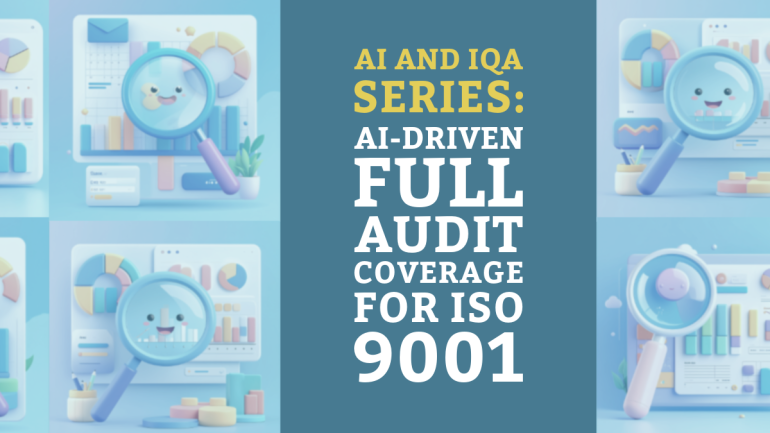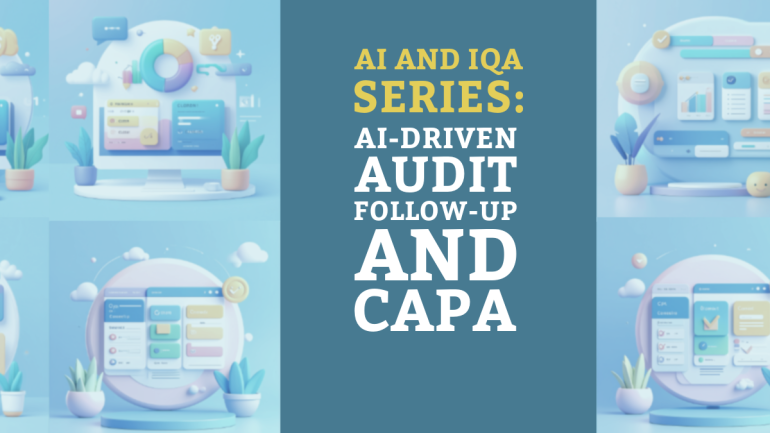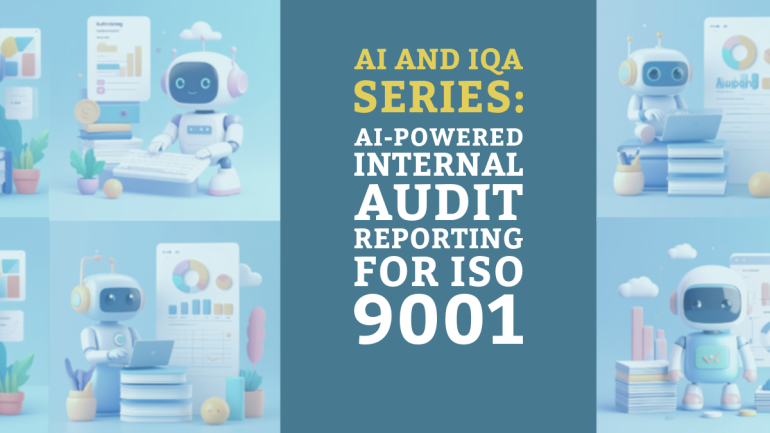Table of Contents
TL;DR: Maximizing Strategic Advantage with Institutional Knowledge
- Identify and Document Knowledge: Organizations should prioritize identifying and documenting institutional knowledge to ensure it is not lost when employees leave or retire.
- Transfer Knowledge Effectively: Implement processes and tools for effective knowledge transfer between experienced and new employees to capitalize on valuable insights.
- Develop a Knowledge Sharing Culture: Foster a culture that encourages employees to share their expertise and experiences to enhance collaboration and innovation within the organization.
- Utilize Technology: Leverage technology platforms and tools to facilitate knowledge management, storage, and retrieval for easy access and utilization of institutional knowledge.
- Continuously Improve Knowledge Management Practices: Regularly review and refine knowledge management strategies to adapt to changing business needs and optimize the utilization of institutional knowledge for strategic advantage.
Many organizations possess a wealth of institutional knowledge accumulated over years of operations. This knowledge, which includes historical data, best practices, and lessons learned, can be a valuable asset when leveraged effectively. By tapping into this reservoir of information, businesses can gain a strategic advantage in their respective industries.
However, failing to harness this institutional knowledge can be detrimental to an organization’s growth and competitiveness. In this blog post, we will explore the importance of capturing and utilizing institutional knowledge to drive strategic decision-making and secure long-term success in today’s dynamic business environment.
The Lifecycle of Institutional Knowledge
Creation and Acquisition
One of the most critical phases in the lifecycle of institutional knowledge is its creation and acquisition. This phase involves the generation of new ideas, insights, and information within the organization, as well as the procurement of external knowledge through research, collaboration, or training programs. During this phase, it is crucial for organizations to capture relevant knowledge and expertise in a systematic manner to ensure its preservation and accessibility for future use.
Dissemination and Sharing
Institutional knowledge can only provide strategic advantage if it is effectively disseminated and shared across the organization. This phase involves the distribution of knowledge through various channels such as training sessions, knowledge-sharing platforms, mentorship programs, and organizational culture. By fostering a culture of sharing and collaboration, organizations can maximize the value of their institutional knowledge and promote innovation and continuous improvement.
Effective dissemination and sharing of knowledge also help prevent knowledge silos and ensure that insights and best practices are accessible to all employees, regardless of their role or seniority within the organization.
Application and Utilization
Creation and acquisition of institutional knowledge are futile unless they are put into practice. The application and utilization phase involve leveraging the knowledge and insights gathered to make informed decisions, solve problems, and drive organizational growth. By applying institutional knowledge to real-world scenarios, organizations can improve efficiency, productivity, and overall performance.
Acquisition of institutional knowledge is an ongoing process that requires continuous learning and adaptation. Organizations must invest in training programs, technology solutions, and knowledge management systems to ensure that employees have the tools and resources they need to effectively apply and utilize institutional knowledge in their day-to-day activities.
Another
It is crucial for organizations to prioritize the lifecycle of institutional knowledge and establish processes and systems that support its creation, dissemination, and application. By harnessing institutional knowledge effectively, organizations can gain a competitive edge, drive innovation, and achieve long-term success.
Technologies for Capturing Institutional Knowledge
Knowledge Management Systems
To effectively capture and manage institutional knowledge, organizations turn to Knowledge Management Systems (KMS). These systems serve as centralized repositories for storing, organizing, and retrieving knowledge assets such as documents, reports, and best practices. By utilizing features like keyword search, categorization, and version control, KMS enable employees to easily access relevant information to make informed decisions, solve problems, and innovate.
Collaborative Tools and Networks
On the other hand, Collaborative Tools and Networks provide platforms for employees to share ideas, insights, and experiences in real-time. These tools range from project management software and intranet portals to social networking platforms and messaging apps. By fostering collaboration and communication among team members across departments and locations, organizations can harness the collective intelligence of their workforce to drive innovation and improve decision-making.
One such example of Collaborative Tools and Networks is Slack, a popular messaging app that enables teams to communicate seamlessly, share files, and integrate with other productivity tools. By creating channels for different projects or departments, employees can collaborate effectively, share updates, and provide feedback in a centralized and organized manner.
AI and Machine Learning Contributions
With advancements in Artificial Intelligence (AI) and Machine Learning, organizations can now leverage these technologies to extract insights from vast amounts of data and automate knowledge capture processes. AI-powered systems can analyze unstructured data such as emails, documents, and social media interactions to identify patterns, trends, and valuable information. By deploying chatbots and virtual assistants, organizations can also provide personalized knowledge access and support to employees in real-time, enhancing productivity and decision-making processes.
Machine learning algorithms can recommend relevant content based on user preferences and behaviors, making knowledge discovery more efficient and tailored to individual needs. By continuously learning and adapting, AI systems can contribute to building a dynamic knowledge base that evolves with the organization’s needs and challenges, positioning them for strategic advantage in the ever-changing business landscape.
Culture and Leadership in Knowledge Management
Fostering a Knowledge-Sharing Culture
Despite the increasing recognition of the importance of knowledge management, many organizations struggle to foster a culture that encourages knowledge sharing. Organizational culture plays a crucial role in determining the success of knowledge management initiatives. A culture that values collaboration, continuous learning, and open communication is more likely to support knowledge sharing among employees.
The Role of Leadership in Knowledge Stewardship
Leadership is integral to the effective implementation of knowledge management practices within an organization. Leaders must demonstrate a commitment to knowledge sharing and set an example for others to follow. By fostering a culture of transparency and trust, leaders can empower employees to share their knowledge and expertise freely.
Leaders who actively participate in knowledge sharing activities and provide recognition for knowledge contributions can inspire others to engage in similar behaviors. This helps create a culture where sharing knowledge is not only encouraged but also rewarded, leading to increased collaboration and innovation within the organization.
Overcoming Barriers to Knowledge Flow
An organization must identify and address barriers that hinder the flow of knowledge among employees in order to harness its institutional knowledge effectively. Common barriers to knowledge flow include lack of trust, fear of criticism, and siloed information.
By promoting a culture of openness and trust, implementing technology solutions that facilitate knowledge sharing, and providing training on effective communication and collaboration, organizations can break down these barriers and create an environment where knowledge can flow freely, ultimately leading to improved decision-making and organizational performance.
Strategic Knowledge Mapping and Analysis
Identifying Core Knowledge Areas
Your organization’s success relies on the effective identification of core knowledge areas that drive innovation and competitive advantage. To achieve this, it is crucial to systematically analyze the internal expertise, experiences, and skills that set your organization apart. By identifying these core knowledge areas, you can prioritize strategic initiatives and allocate resources more effectively.
Mapping Knowledge Assets and Flows
To harness institutional knowledge for strategic advantage, organizations must map knowledge assets and flows throughout the entire organization. This involves identifying key individuals, teams, and departments that possess critical knowledge and understanding how knowledge circulates within and outside the organization. Analysis of knowledge assets and flows can reveal strengths, weaknesses, and opportunities for improvement in knowledge management processes.
Analysis
Understanding how knowledge is created, shared, and utilized within the organization is important for effective decision-making and strategic planning. By mapping knowledge assets and flows, organizations can enhance collaboration, increase efficiency, and drive innovation.
Gap Analysis for Knowledge Enhancement
Strategic knowledge mapping should also include a gap analysis to identify areas where the organization lacks critical knowledge or skills. This process involves comparing the organization’s current knowledge capabilities with its strategic goals and objectives. By pinpointing gaps in knowledge, organizations can develop targeted training programs, recruit new talent, or establish partnerships to enhance their knowledge base.
Strategic
By conducting a thorough gap analysis for knowledge enhancement, organizations can ensure they are well-equipped to achieve their long-term strategic objectives. Addressing knowledge gaps proactively can help organizations stay ahead of competitors and adapt to changing market conditions.
With strategic knowledge mapping and analysis, organizations can leverage their institutional knowledge to drive innovation, improve decision-making, and gain a competitive edge in the marketplace.
Knowledge Retention Strategies
Tackling the Challenge of Employee Turnover
Once again, organizations are faced with the daunting challenge of employee turnover, leading to potential knowledge loss. To address this issue, companies must implement proactive strategies to retain critical institutional knowledge. One approach is to create comprehensive knowledge transfer programs that facilitate the seamless transition of knowledge from exiting employees to new hires.
Lessons Learned Repositories & After-Action Reviews
Retention of institutional knowledge can be significantly enhanced through the establishment of lessons learned repositories and after-action reviews. These tools provide a platform for capturing insights, best practices, and lessons from past projects or experiences. By systematically documenting and reviewing these insights, organizations can foster a culture of continuous learning and improvement.
Knowledge retention strategies such as lessons learned repositories and after-action reviews can help organizations leverage their past experiences to inform future decision-making and avoid repeating mistakes. These repositories serve as a valuable resource for employees to access relevant information and learn from previous successes and failures.
Mentoring and Succession Planning
Any effective knowledge retention strategy should include mentoring and succession planning initiatives. Mentoring programs enable experienced employees to transfer their knowledge and expertise to younger or less experienced colleagues. Succession planning, on the other hand, ensures that key roles within the organization are filled by individuals who have been groomed and prepared to take on increased responsibilities.
Strategies like mentoring and succession planning play a crucial role in not only retaining institutional knowledge but also in developing the next generation of leaders within the organization. By investing in these programs, companies can create a sustainable framework for knowledge transfer and talent development, ensuring continuity and success in the long term.
Legal and Ethical Considerations
Intellectual Property Rights and Knowledge Sharing
Many organizations possess valuable intellectual property that must be protected when sharing knowledge internally or externally. Any transfer of information should be done in compliance with existing intellectual property laws and regulations to prevent unauthorized use or duplication. Companies often establish clear policies and guidelines for employees regarding the sharing of proprietary information to safeguard their intellectual assets.
Ethical Management of Sensitive Information
Many ethical considerations come into play when managing sensitive information within an organization. Any sharing of confidential data should be done with strict adherence to privacy laws and company policies to maintain trust and confidentiality. Employees must be trained on proper data handling procedures and ethical conduct to avoid breaches of sensitive information.
One common practice to ensure ethical management of sensitive information is to limit access to data on a need-to-know basis. By restricting information to only those individuals who require it for their duties, organizations can minimize the risk of data leaks or misuse. Regular audits and monitoring of data access can also help maintain ethical standards in information management.
Compliance and Regulatory Concerns in Knowledge Use
As organizations leverage institutional knowledge, they must be mindful of compliance requirements and regulatory concerns that may impact how knowledge is accessed and utilized. One key consideration is ensuring that knowledge sharing practices align with industry-specific regulations such as GDPR, HIPAA, or SOX. Failure to comply with these regulations can result in severe penalties and reputational damage for the organization.
Ethical decision-making in knowledge sharing involves understanding and upholding the legal and regulatory frameworks that govern data and information sharing. By prioritizing compliance and ethical behavior in knowledge management, organizations can mitigate risks and build a solid foundation for leveraging institutional knowledge for strategic advantage.
Implementing a Knowledge-Based Strategy
Now is the time for organizations to harness the power of institutional knowledge for strategic advantage. By implementing a knowledge-based strategy, companies can effectively leverage their internal expertise to drive innovation, streamline processes, and make informed decisions. This approach not only enhances organizational learning but also strengthens competitive positioning in the marketplace.
Integrating Knowledge Management into Strategic Planning
Management plays a critical role in integrating knowledge management into strategic planning. This involves creating a culture that values knowledge sharing, establishing processes for capturing and storing information, and ensuring that insights are used to inform decision-making. By embedding knowledge management practices into strategic planning processes, organizations can align their goals with their intellectual capital, leading to more effective strategies and higher performance levels.
Change Management for Knowledge Initiatives
One of the key challenges in implementing knowledge initiatives is change management. One must navigate through cultural shifts, resistance to new processes, and the need for ongoing training to ensure successful adoption. Organizations need to communicate the benefits of knowledge initiatives, involve employees in the transition process, and provide the necessary support to facilitate the integration of knowledge management practices.
The Measuring the Impact of Knowledge on Strategic Goals
The ability to measure the impact of knowledge on strategic goals is important for assessing the effectiveness of a knowledge-based strategy. The organizations can use key performance indicators (KPIs) such as knowledge sharing metrics, innovation rates, and process efficiencies to track the contribution of knowledge management to strategic outcomes. By analyzing these metrics, organizations can identify areas for improvement, refine their knowledge management strategies, and increase the overall impact on strategic goals.
Implementing Measuring the Impact of Knowledge on Strategic Goals
Strategic alignment of knowledge management efforts with organizational objectives is crucial for measuring the impact of knowledge on strategic goals. By defining clear metrics and regularly evaluating their progress, organizations can demonstrate the value of knowledge initiatives and make informed decisions about future investments. This data-driven approach not only enhances accountability but also enables organizations to continuously optimize their knowledge-based strategies for maximum impact.
Conclusion
Following this exploration of harnessing institutional knowledge for strategic advantage, it is clear that organizations have immense untapped potential within their own walls. By leveraging the experience, expertise, and insights of long-standing employees, companies can gain a competitive edge in a rapidly changing business environment. It is imperative for organizations to create a culture that encourages the sharing and transfer of institutional knowledge to ensure continuity and innovation.
By investing in systems and processes that facilitate the documentation and dissemination of valuable knowledge, companies can build a solid foundation for growth and success. Embracing institutional knowledge as a strategic asset can lead to improved decision-making, increased efficiency, and a more resilient organizational structure. Ultimately, prioritizing the preservation and utilization of institutional knowledge can position companies to adapt to challenges, seize opportunities, and thrive in a dynamic marketplace.
FAQ
Q: What is institutional knowledge?
A: Institutional knowledge refers to the collective expertise, experiences, and insights that are unique to an organization. It includes information about processes, systems, culture, and best practices that have been accumulated over time.
Q: Why is harnessing institutional knowledge important for strategic advantage?
A: Harnessing institutional knowledge allows organizations to leverage their internal assets and capabilities effectively. It enables better decision-making, innovation, problem-solving, and overall performance improvement, giving them a competitive edge in the market.
Q: How can organizations capture institutional knowledge?
A: Organizations can capture institutional knowledge through various means such as documentation, mentorship programs, knowledge-sharing platforms, exit interviews, storytelling sessions, and shadowing experiences. It is crucial to create a structured approach to ensure the effective capture and retention of knowledge.
Q: What are the benefits of leveraging institutional knowledge for strategic advantage?
A: Leveraging institutional knowledge can lead to improved operational efficiency, enhanced employee engagement and retention, faster learning curves for new employees, increased innovation, better decision-making, and a more sustainable competitive advantage in the long run.
Q: How can organizations ensure the continuous utilization of institutional knowledge?
A: Organizations can ensure the continuous utilization of institutional knowledge by creating a knowledge-sharing culture, integrating knowledge management into strategic planning processes, providing ongoing training and development opportunities, incentivizing knowledge sharing, and regularly assessing the effectiveness of knowledge utilization efforts.





